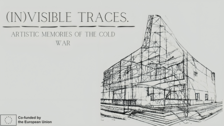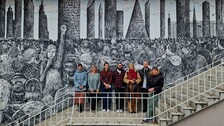(In)Visible Traces. Artistic memories of the Cold War
Project description
Documenta and its partners decided to write this project with the main aim to involve artists, art professionals, cultural heritage researchers, youth, educators, policymakers, and other European citizens in a reflection and discussion about European cultural heritage, especially regarding preservation of historical buildings or now vacant sites, which testify to or illustrate the political history of Cold War. The project will contribute to raising awareness and finding solutions to the questions: how to protect neglected cultural heritage sites, how to make it more visible, how to use the potential of heritage locations for art, education, culture, and tourism, and how to conserve and protect heritage locations. The innovative dimension of the project is in the systematic combining of art and research work with heritage protection, while utilizing decades of experience of the consortium in advocating for setting up and organizing public heritage protection institutions.
The project’s impact surpasses the 4 countries involved (Croatia, Romania, Austria, and Germany) by engaging artists from all European countries and from Ukraine, to address unprotected sites in other signatories of the European Cultural Convention through the combined lenses of art and heritage protection. The project is relevant for the scope of the call because it will contribute to safeguarding and promoting European cultural heritage, focusing on heritage at risk, in need of legal and physical protection or rebuilding after war, highlighting similarities and differences in Europe. By tackling the topics of shared European history in the Cold War period and, at the same time, of the differences and particularities of each country involved, the consortium will increase knowledge about the chosen places, their stories, and their visibility across Europe. The project will have 1 644 direct participants and around 70 000 indirect participants.
Objective
- Transnational creation and circulation
Priorities
- Social inclusion
- Sector priority

